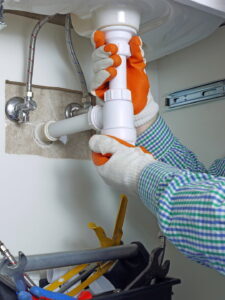Backflow might not be the topic you had in mind to learn about on a beautiful spring morning. But for many homeowners that are taking part in some home improvement projects, or for people who want to learn exactly how their home plumbing system works, it’s a vital topic.
It’s kind of impossible to talk about plumbing without discussing backflow. It’s essentially exactly what the name implies—when wastewater flows backward into your pipes causing contamination, unsafe conditions, and even destruction. It’s a nasty thing to have happen, which is why there are tools, systems, and even services specifically designed for backflow prevention in Shelton, WA.
This blog will highlight some of the questions that customers often have about backflow and plumbing in general. Hopefully, with these answers, you’ll be in a better spot to prevent your home from encountering a backflow issue.
5 Essential Questions
Let’s get right into it! Here are five essential questions that you’ll want to ask if you’re exploring your backflow prevention options, and are curious about what this might cost.
1. Is Backflow Dangerous?
Yes, it definitely can be. But the perils of backflow come from the potential contamination of your water supply, which is usually hard to see with the naked eye. Water can look clear as its coming from your spigot, but it might be contaminated with bacteria or mold that has developed from sewer backflow in one of your home plumbing systems.
If a single toilet in your basement has a problem with backflow, that could contaminate the freshwater line and in turn all of the water used throughout your home is in jeopardy of getting contaminated.
2. Why Does Backflow Happen?
Backflow usually occurs when a sewer or septic system is backed up. The waste has nowhere to go and it builds up, essentially right up to where your appliance and water intake are. Then, you could have a clogged toilet or filled-up faucet put dirty water in contact with clean water.
3. Where Is My Plumbing System Most Vulnerable?
The plumbing pipes and appliances that are most vulnerable to backflow are the ones lowest to the ground. These are usually basement pipes and appliances since they’re the closes ones to your underground sewer or septic system.
4. Can I Do This Work on My Own?
Not really. Trying to install backflow prevention devices can be messy, costly, and downright dangerous if done improperly. We’d recommend working with a professional so you can continue to live your life while we take care of the situation.
5. How Much Does Backflow Prevention Cost?
Very little in comparison to what the treatment of a backflow contamination would cost! All we would need to do for backflow prevention is install backflow prevention valves, which are basically one-way valves that stop water from flowing in a backwards direction, essentially stopping the opportunity for backflow to occur.
This is a simple upgrade that doesn’t take very much time or effort, but it should always be done by a professional. Different pipes in your home might require this upgrade, so we can also do an inspection beforehand to make sure your whole house is treated properly.
For great backflow prevention services, contact American Pump and Drilling. We’ve got your back.

